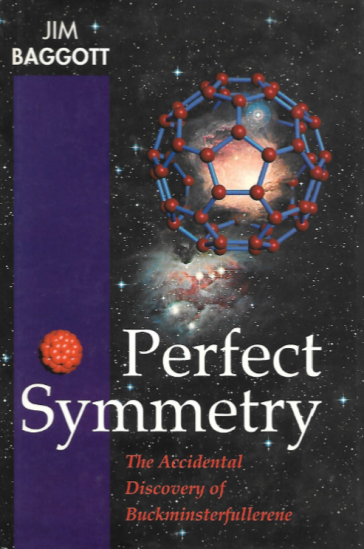Perfect Symmetry: The Accidental Discovery of Buckminsterfullerene
In this account, prize-winning science writer Jim Baggott tells the compelling story of buckminsterfullerene, from its natural occurrence in the cold chemistry of interstellar clouds to its accidental, stunning creation in a modern chemistry laboratory, and the subsequent development of one of today's fastest-growing scientific fields.
In 1966, it was an amusing idea. In September 1985, it was a ball of paper and sticky tape, the result of six days of intense scientific discussion and one moment of inspiration. Five years later it was finally real: a perfectly symmetrical soccer-ball shaped molecule composed of 60 carbon atoms and called buckminsterfullerene. This new molecule – one of a large family of carbon cage molecules called ‘fullerenes’ – represents a new form of carbon in addition to diamond and graphite. Its discovery has revolutionized our understanding of this once most familiar of all elements. It has heralded a new chemistry, a new range of high-temperature superconductors, and some marvellous new concepts in the architecture of large carbon structures.
Carbon will never be the same again. In Perfect Symmetry, prize-winning science writer Jim Baggott tells the story of the accidental discovery of buckminsterfullerene, from its origins in the cold chemistry of interstellar clouds to the development of the fast-growing field of fullerene science. It is a story full of surprises.
- Oxford University Press (1994)
- Translations: Chinese, Japanese


